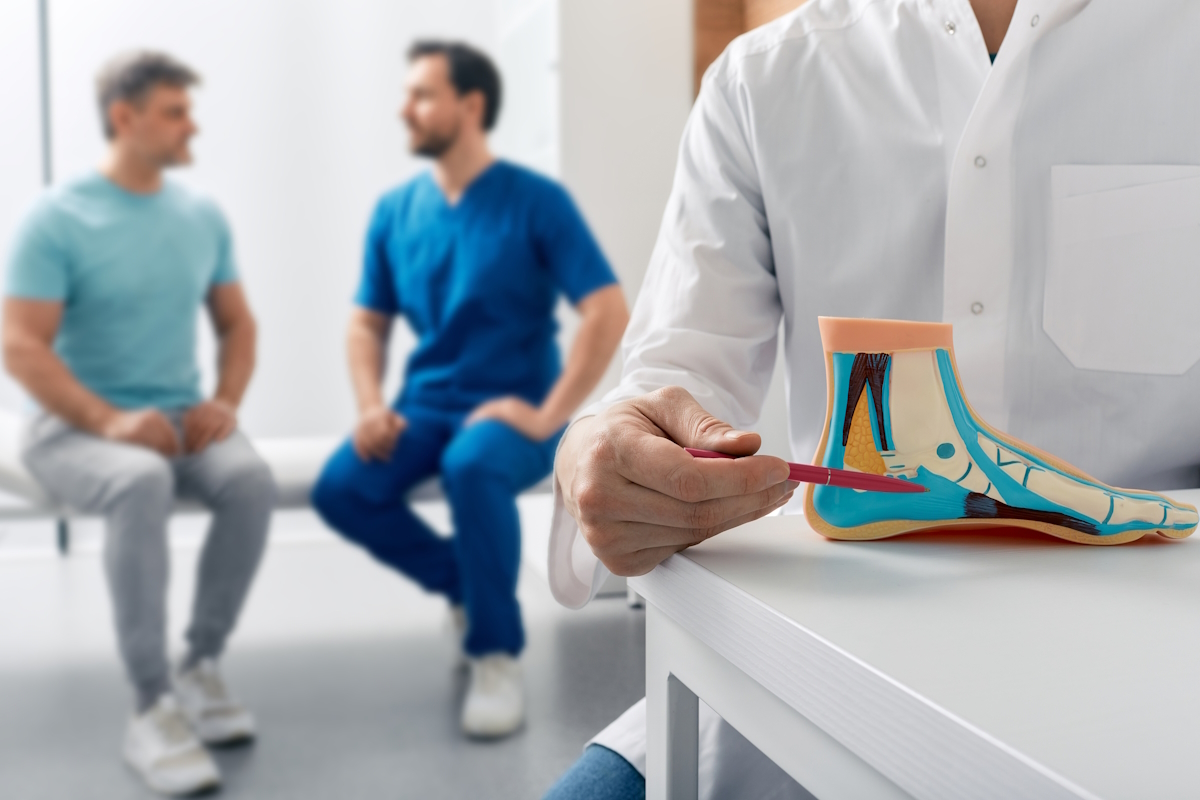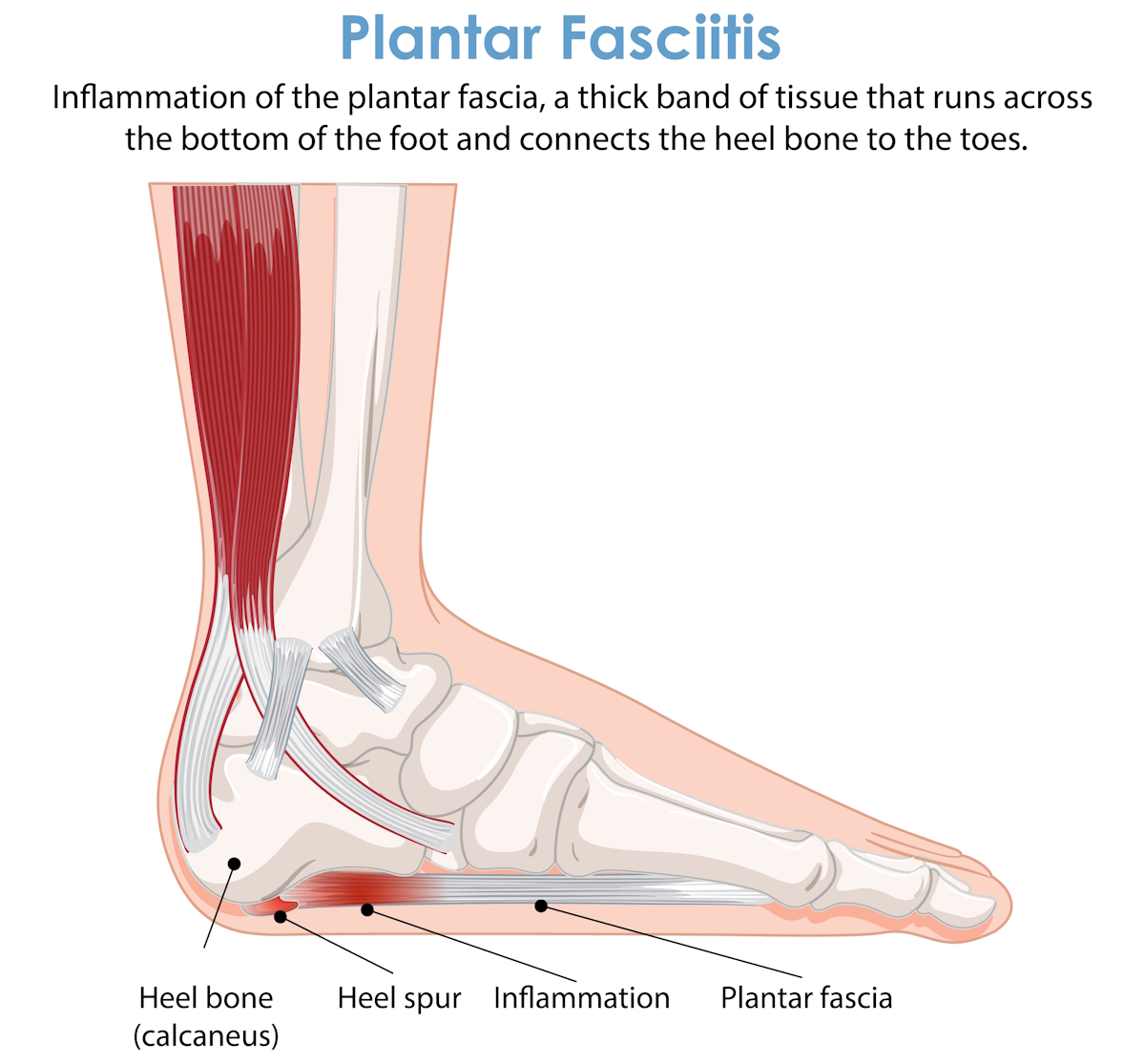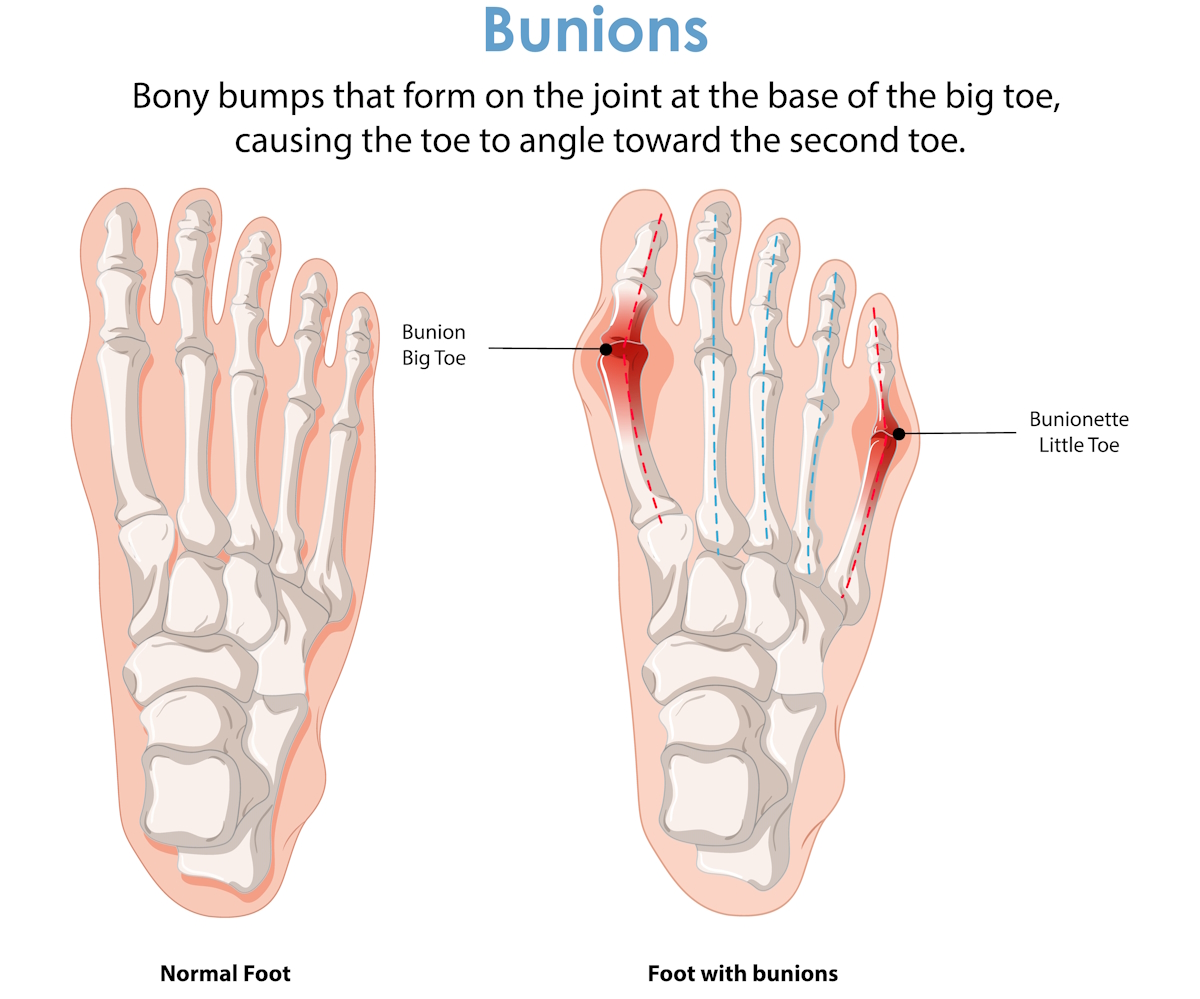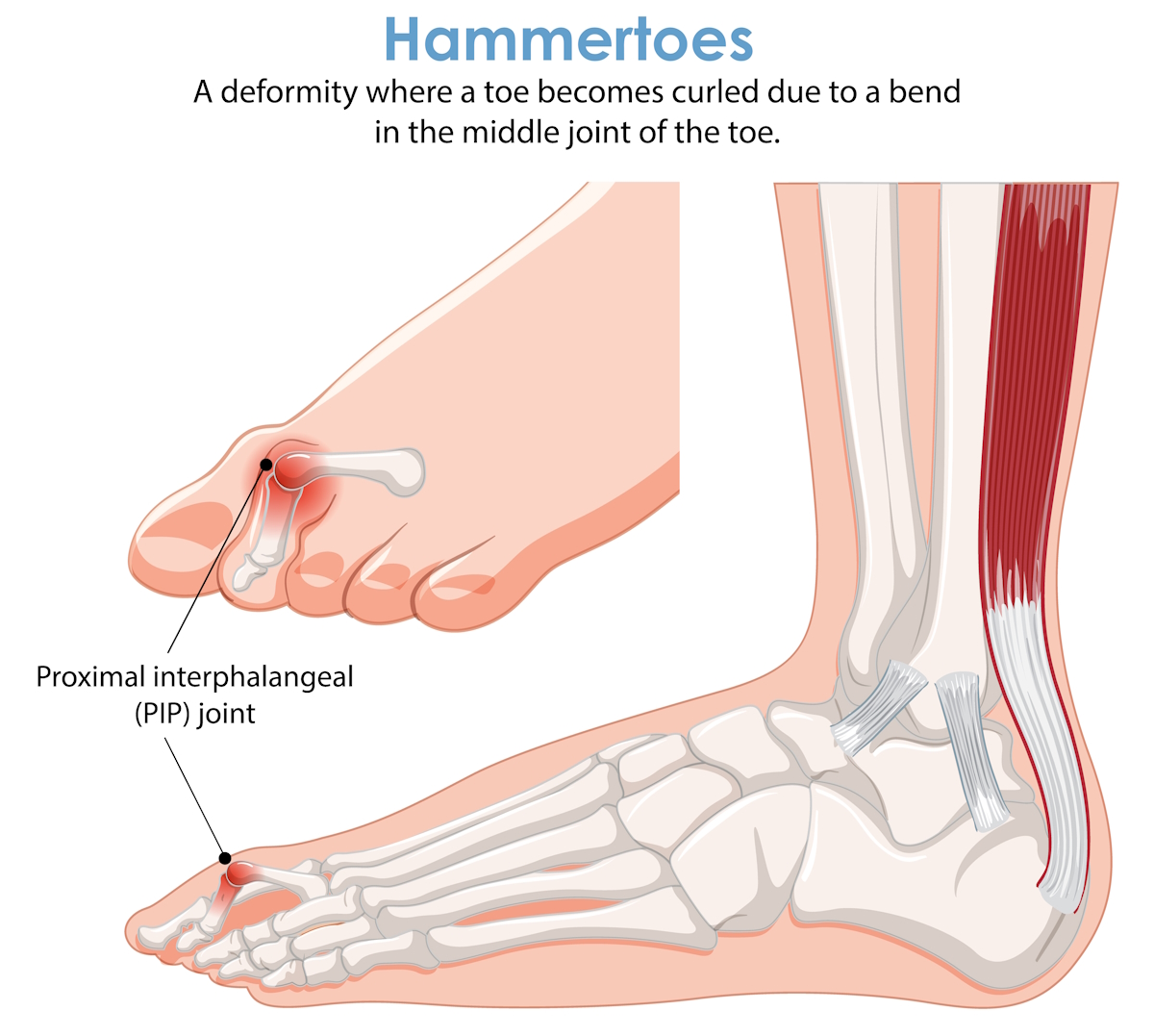From Calluses and Bunions to Plantar Fasciitis: The 9 Most Common Foot Conditions Podiatrists Can Help You With
Author: StrideCare Internal Team

It was a normal Tuesday, and Dan* was ready for his regular long walk around the neighborhood after dinner. He felt loose and energetic, and he had plenty of time on his hands. That said, he could not help but worry about the familiar ache in his heel and the callus on the side of his big toe. He hoped neither would keep him from completing his goal of at least a 30-minute workout, but the pain worsened less than halfway through his usual route. The dull ache in his heel, later diagnosed as severe plantar fasciitis, and the constant rubbing near his callus went from a mild annoyance to sharp, stabbing pain with each step. Dan’s story is far from uncommon, and as he cut his walk short for the day, he kicked himself as he realized that all of this could have been managed earlier had he visited one of the local podiatrists.
With 26 bones, 33 joints, and over a hundred muscles, tendons, and ligaments, our feet are the foundation for the rest of our body. It is easy to expect our feet to keep doing their job, but the reality is that all that wear and tear will eventually lead to problems that can sneak up on all of us and make getting around in our daily lives difficult.
This is where podiatrists can help. Our podiatrists at StrideCare study how bones, nerves, and muscles work together to help you move. From Dan’s heel pain and callus to more complex conditions, we treat a range of foot conditions.
Are You Experiencing Any of These Foot Ailments?
- Intense stabbing or shooting pain
- Dull, aching pain along the arch or side of the foot
- Burning, throbbing, and tingling sensations
- Cramping
- Sprains and strains
- Persistent inflammation
- Calluses
- Increased foot pain during activity
- Intense heel pain
- Irritated toes and feet
- Chronic wounds

Request an appointment with one of our StrideCare podiatrists today. Our collaborative approach ensures you receive the support you need for optimal foot care.
9 Common Foot Conditions Podiatrists Treat
Podiatrists are not limited in terms of the scope of our role in foot health. We have surgical and nonsurgical answers for everything from acute and severe injuries to various infections and complications from chronic conditions such as diabetes and arthritis. That said, we see and treat certain foot conditions more than anything else.
Let us explore nine of the most common ones we treat:
1. Plantar fasciitis
This condition is marked by painful inflammation of the thick band of tissue that runs across the bottom of the foot and connects the heel bone to the toes. More than 2 million people in the United States are treated by podiatrists each year for plantar fasciitis with custom orthotics, medication, prescribed stretching exercises, and steroid injections.
Before treatment, those who experience this condition describe the pain as dull, sharp, and shooting pain in the arch of the foot. Many people also experience stiffness, predominately first thing in the morning, and occasional swelling.

The causes of plantar fasciitis run the gamut and can include:
- Running, jumping, and walking
- Being on your feet all day at work
- Walking barefoot
- Wearing ill-fitted shoes
2. Ingrown toenails
Another common condition that podiatrists treat is when a toenail grows past the nail bed and digs into your skin. While you may not initially think much about an ingrown toenail, it can quickly lead to persistent irritation, swelling, and pain. It is usually because of improper toenail trimming and shoes that do not fit correctly, but it can also be because of poor blood circulation in the feet and diabetes.
Podiatrists are skilled at removing the portion of the nail causing the problem. Our team of podiatrists can also prescribe antibiotics if an infection is present and recommend techniques for preventing recurrences.
3. Bunions
These are bony bumps at the base of the big toe. They tend to develop over time because of ill-fitting shoes that cause repetitive micro-trauma, though other reasons include repeated injuries and genetics. In fact, studies show that bunions are more common in women and seniors.

The good news is that podiatrists see patients with bunions every day and have several treatment methods depending on the severity of their condition. This includes everything from footwear modifications to surgical intervention. If you are not sure if what you are experiencing is bunion-related, here are a few top symptoms.
- A noticeable and painful bump on the outside of the base of your big toe
- Pain that comes and goes
- Swelling and redness around the big toe joint
- Signs of corns and calluses where the first and second toe rub together
4. Heel spurs
Often accompanying plantar fasciitis, heel spurs are caused by a buildup of calcium deposits on the underside of the heel bone. Most people do not notice these spurs at first, as they progressively worsen over many months. Treatment can range from custom orthotics and strengthening and stretching to shockwave therapy and even surgery. If the condition progresses, you may experience the following symptoms.
- Pain or tenderness over the weight-bearing part of the bottom of the heel
- The presence of a bony lump
- Inflammation at the bottom of the heel
- Pain when walking or exercising
5. Corns and calluses
If you notice that your socks and/or shoes repeatedly rub or cause pressure on the skin in one area of your foot, you may develop corns or calluses. Corns are smaller than calluses and are marked by a hard center surrounded by swollen skin that is painful when touched. Meanwhile, calluses are more prominent and develop on pressure spots such as the heels, balls of the feet, or palms and knees. See a podiatrist if your corn or callus becomes very painful or inflamed.
Foot care is essential for people of all ages. If you have any concerns about your foot health, schedule an appointment with StrideCare’s expert podiatrists.
6. Flat feet
It is estimated that 20-30% of the U.S. population has flat feet, characterized by the entire sole of the foot being able to touch the floor when standing. You can be born with flat feet or develop them over time because of weight issues, injury or trauma, diabetes, or excessive exercise. If you have flat feet, it is easy to think nothing can be done about it. But this could not be further from the truth. After a detailed assessment, podiatrists can recommend physical therapy and custom orthotics. In severe cases, surgery may be recommended.
7. Athlete’s foot
This fungal infection usually begins between the toes and is characterized by an itchy, scaly rash. Around 15% to 25% of people are likely to have athlete’s foot at any time. The infection can spread to other parts of the body and different people.
Often, a mild athlete’s foot can be cured or managed with an over-the-counter anti-fungal spray or cream. If the infection resists these treatments, a podiatrist may prescribe something stronger and can offer advice on preventing future outbreaks. This may include
- Keeping your feet dry and clean at all times
- Wearing breathable footwear
- Changing your socks regularly
- Protecting your feet in public places
- Applying foot powder
8. Hammertoes
If continuous abnormal pressure is placed on the toes (such as wearing shoes that do not fit properly), it can cause an abnormal bend in the toe known as hammertoe. Hammertoe can be caused by genetics as well; people with high or flat foot arches or longer toe bones may be more likely to develop it.
If you have hammertoes, seek treatment to avoid complications and chronic foot pain. Podiatrists at StrideCare can treat hammertoes with shoe modifications, orthotics, splinting, and even surgery.

9. Chronic wounds
Wounds on the feet are considered chronic if they do not heal through traditional methods within a few days or weeks and have not completely healed in six weeks. Chronic wounds are typically the result of diabetes or vascular diseases and conditions such as venous insufficiency and swollen legs. StrideCare podiatrists have access to our network of vascular doctors who can step in and create a team approach to treat the underlying condition. Additionally, podiatrists get involved in treating the wound itself and educating patients on proper foot care routines.
StrideCare Podiatrists Are Here To Help Keep Your Feet Healthy
We all experience pain, especially in our feet. Sometimes, that can lead to a lengthy list of conditions such as plantar fasciitis, bunions, corns, and many other common foot conditions. When these situations pop up, please do not suffer in silence. If the condition continues to persist, you have a wealth of options when it comes to expert podiatrists in our network. A consultation with one of our podiatrists can determine the type, severity, and location of your chronic foot pain issues. Furthermore, our expert doctors and caring staff utilize the latest technologies and treatments to help our patients reclaim their lives.
As the largest multi-specialty network in Texas, StrideCare helps patients achieve improved quality of life from common and complex conditions, including diabetic vascular issues, peripheral arterial disease, venous insufficiency, foot neuropathy, varicose veins, diabetic foot ulcers, and wounds. The good news is that finding someone to help near your area is easier than ever, with over 50 StrideCare clinic locations across the state. We are a Texas-based practice, with each clinic locally managed.
At StrideCare, we are here to help, all while providing compassionate patient care. Please contact us at 866-552-4866 or complete the appointment form to schedule a consultation.
This information is not a substitute for professional medical advice. Prior to starting any new treatment or questions regarding a medical condition, always seek the advice of your doctor or other qualified health provider.
StrideCare serves North Texas and South Texas communities, including Houston, Irving, Katy, Kaufman, Mansfield, McKinney, Mesquite, Midland, North Dallas, Odessa, Paris, Pecos, Plano, Prosper, Rockwall, Round Rock, Rowlett, Royce City, San Antonio, Sherman, South Dallas, Southlake, Stone Oak, Sugar Land, Sulphur Springs, The Woodlands, Waxahachie, Webster, Addison, Allen, Anna, Arlington, Austin, Carrollton, Celina, Clear Lake, Craig Ranch, Dallas, Euless, Flower Mound, Forney, Fort Worth, Frisco, Garland and more.
*Patient names and/or photos may be changed to protect patient confidentiality.


